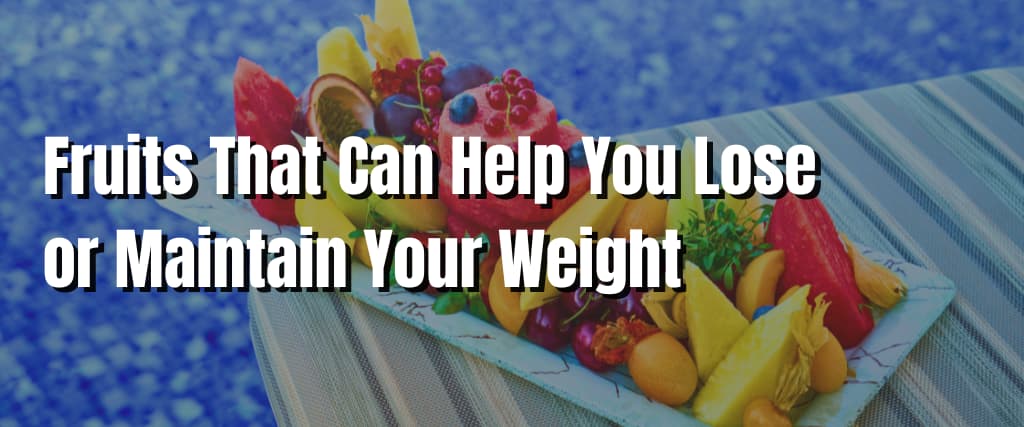A varied diet is essential to healthy eating.
The precise composition of the ideal diet that meets your needs is determined by a variety of factors, including your gender, culture, age, dietary practices, lifestyle, and the types of food accessible to you and within your price range in your locality.
According to Rachel Lander-Canseco, a licensed dietitian from Keck Medicine of USC, a nutritious diet should include five portions of vegetables and fruits daily.
“Regardless of what kinds of meals you consume, wholesome diets ought to attempt to apply this number of portions,” she says. “Research indicates this can boost overall wellness and decrease the likelihood of serious medical issues, like diabetes, particularly type 2 diabetes and obesity.”
Diets that are high in fibre and include many fruits may also assist with managing weight.
Eating fruit can help you feel fuller for longer while at the same time reducing the amount of food you consume and the number of calories you take in because of its high water and fibre content.
According to Lander-Canseco, one should not be concerned about the naturally occurring sugar in fruit but rather welcome it.
“For whatever reason, many believe that since fruits taste sweet, they are bad when trying to maintain a healthy diet,” she explains. “But fruits are perfectly acceptable.”
“The glucose boost that one would gain from eating white flour and bread or other types of carbohydrates is outweighed by the benefits obtained from fruits due to the high levels of minerals, fibre and vitamins that fruits contain.”
Bear in mind, however, that consuming fewer calories or eating fewer calories overall will not result in weight loss on its own.
According to Lander-Canseco, “I wouldn’t recommend that a person who dislikes apples ought to consume apples to help it will help with their weight loss,” as apples are known to aid in weight loss.
If you want to keep a nutritious diet, knowing which sorts of fruits you should choose is crucial. The most significant factors are variety and overall satisfaction.
“If you genuinely like whatever fruit you’re consuming, you’re more probable to seek it when you need a snack, instead of a pack of crisps or another high-fat snack,” Lander-Canseco adds.
Consuming fruits that are in season can also assist in maximising the benefits to one’s health.
According to Lander-Canseco, fruits in the season tend to include larger sources of the beneficial components of their makeup.
Therefore, carbohydrates, vitamins, and minerals all have higher concentrations in their trace levels at peak season. The high concentration of nutrients is also why they have such a pleasant flavour.
The following is a list of some incredible fruits and the special benefits that each offers to one’s health:
1. Watermelon

Watermelons are great for weight loss because nearly all their weight comes from water. Having just thirty calories per 100 grams is a huge plus. It’s also rich in the amino acid arginine, which was found to speed up the body’s fat-burning processes.
According to Lander-Canseco, “snacking on melons will assist in making you feel full,” which helps prevent hunger pangs between meals.
2. Guavas
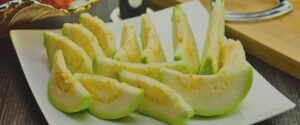
These tropical fruits are high in fibre and other healthy nutrients and can help curb hunger. Not only do they have no cholesterol, but they also have significantly less sugar than common fruits like oranges, apples, and grapes.
Lander-Canseco states, “All fruits include phytonutrients or phytochemicals, which refer to chemical elements found in food which we assume to have a helpful and protective effect.”
To varying degrees, that’s true of all fruits. Guavas’ phytochemicals are linked to benefits including reduced inflammation, diabetes and cancer prevention.
3. Grapefruit
In addition to being tasty, this 18th-century hybrid of a pomelo and an orange fruit offers a high amount of pectin, a dietary fibre linked to a reduced risk of some cancers. Vitamin C, folic acid, and potassium are all abundant in it.
Vitamin A and the carotenoid lycopene, both abundant in red and pink grapefruits, have been linked to a reduced risk of developing type 2 diabetes, as well as a reduced risk of cardiovascular disease and neurodegenerative.
Lander-Canseco claims that the colour of fruit indicates its health advantages. In most cases, the more varied the colours of your diet, the more health benefits you’ll provide for your body.
4. Banana

Some people seeking to save calories and sugar avoid bananas because they are sweet.
Bananas are more nutrient-dense than numerous other fruits, providing magnesium, potassium, fibre, manganese, vitamin C and B6 and several antioxidants, despite their higher calorie density.
Particularly beneficial for patients with diabetes, having medium to low galvanised iron may aid in glycemic management and weight maintenance.
Another study from 2014 showed that patients whose cholesterol levels were too high benefited from eating a banana a day.
Bananas are essential to a healthy diet because they are nutrient-dense, high quality and low in calories.
Bananas are versatile fruits that may be eaten cooked or raw and enjoyed as a snack.
Bananas are a great addition to a healthy diet because they are high in fibre and other nutrients that aid in weight loss.
5. Tomato

Let’s keep in mind that tomatoes are fruits, not vegetables. This potent red bud can help you not feel as bloated because of its high antioxidant content and its ability to decrease water retention.
Additionally, tomatoes help reduce resistance to leptin. Leptin acts as a hormone that sends signals to the brain when a person is full, allowing for better regulation of food intake.
Tomatoes are also a great low-calorie food option. Tomatoes are low in calories; even an enormous one has only 33cals. Tomatoes are high in fibre, water and air, making them a “high-volume” food that can help curb hunger.
Don’t stress about eating a certain amount of a certain kind of fruit.
6. Oranges
Oranges are widely known for their role in strengthening the immune system, but they also contribute significantly to weight loss. Oranges are fantastic since they are delicious and provide many healthy nutrients.
One big orange provides nearly all the vitamin C,10% potassium and 4g of fibre you need daily. Carotenoids, the class of antioxidants which gave oranges their name, are also abundant in oranges.
Carotenoids can promote overall health by lowering body fat, enhancing eyesight, and bolstering the immune system.
7. Grapefruit

Grapefruit, the offspring of an orange and a pomelo, is popular in weight loss and dieting.
Half of a grapefruit, equal to 123 grams, has only 37 cals but contains 51% of the DV for vitamin C. Vitamin A is also present in very modest amounts in red variants.
And because of its lower glycemic index, grapefruit gradually increases blood sugar after eating. Although there is scant data, a low GI diet may help with weight loss and maintenance.
An interesting new review indicated that grapefruit eating lowered risk factors for obesity and hypertension.
In addition, naringenin, flavonoid compounds with anti-inflammatory and antioxidant effects, is abundant in grapefruit and can protect against heart disease and diabetes.
Grapefruit is delicious when served alone and complements many other foods like salads.
Grapefruit is an excellent source of vitamin C and has little calories. It could be a good choice for a light snack before dinner if you’re trying to reduce your calorie intake.
8. Apples
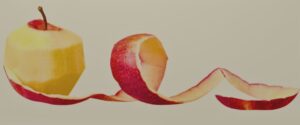
Apples, which provide 116 cals (low) and 5.4 grams of fibre per large apple (223 grams), rank eighth on the list of healthiest foods.
They’re also helpful for trimming down your waistline.
Three oat biscuits, three pears, or three apples (each with an equal number of calories) were given to women every day for ten weeks in a study conducted in 2008.
The oat group maintained their weight, whereas the group that ate apples shed 2.1 pounds (0.93 kilograms), and the group that ate pears lost 1.6 pounds (0.84 kilograms).
Another study involving 124,086 adults found that daily apple consumption resulted in a 0.56-pound weight loss on average over four years.
According to studies, eating an apple whole is more effective than drinking apple juice at curbing appetite and hunger.
However, two previous research found that people who drank apple juice lost more weight than those who drank a noncaloric beverage.
One of the natural chemicals in apples, apple polyphenol extracts, has been associated with increased levels of good cholesterol, or HDL, and reduced inflammation.
There are many ways to eat apples, both cooked and raw. You can bake them alone or incorporate them into various dishes, including cold and hot cereals, salads, stews and yogurt.
Apples are satisfying despite their low-calorie count and high fibre content. Research suggests they may aid in shedding extra pounds.
9. Berries
These fruits are nutritious powerhouses that are incredibly low in calories.
For instance, a cup of 123 grams of raspberries has only 64 cals but 36 per cent of the daily value of manganese and vitamin C and 12 per cent of the daily value of vitamin K.
There are fewer than 50 cals and 3 grams of fibre in only one cup (152 grams) of strawberries, not to mention 99% of the daily value of vitamin C plus 26% for manganese.
Consuming berries can help you feel full for longer. According to short research, people who ate a 65-calorie snack of berries instead of candy ate less at the next meal.
In addition, research suggests that those who are overweight may benefit from consuming berries because of their potential to lower cholesterol, blood pressure, and inflammation.
Most people take berries, either frozen or fresh berries. They are versatile in many dishes, including breakfast cereal, yogurt, smoothies, baked goods, and salads.
Berries have a lot of good vitamins and are minimal in calories. Possible health benefits include lowered cholesterol, inflammation and blood pressure.
10. Stone fruits
Stone fruits, or drupes, are seasonal and are characterised by a fleshy outside and a pit or stone inside. Plums, peaches, apricots, cherries and nectarines are all stone fruits.
Weight-watchers can benefit significantly from eating stone fruits due to their low glycemic index (GI), low-calorie content, and high vitamin C and A content.
Two tiny plums (132 grams) or 140 grams of apricots have fewer than 70 calories. A medium peach (150 grams) has 58 calories. One cup (138 grams) of cherries contains 87 calories.
Stone fruits are a healthier, more satisfying alternative to processed snack items like chips and cookies.
You can consume stone fruits while raw, in fruit salads, in a substantial cereal, on the grill, or even in savoury recipes like stews.
Stone fruits, such as plums, peaches and nectarines, are a healthy, seasonal option for snacking. They’re healthier than snack foods like chips and cookies.
11. Passion Fruit
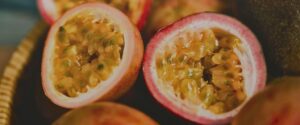
The passion fruit vine is a visually stunning flowering plant from which the fruit gets its name. The yellow or purple exterior is rough, but the fleshy mass of seeds inside is delicious.
Passion fruit is an excellent source of vitamin C, vitamin A, potassium, fibre and iron. One purple or yellow passion fruit (18 grams) has only 18 calories.
Passion fruit has an impressive quantity of fibre for such a tiny fruit. You may get 33 per cent of the daily value of fibre for fewer than 100 calories by eating only five passion fruits.
Consuming fibre-rich foods can help you feel full for longer while curbing cravings.
In addition, the piceatannol found in the fruit’s seeds has been associated with lower blood pressure and greater insulin sensitivity in overweight men. Nonetheless, additional study is required.
Consuming a whole passion fruit can aid in weight loss. It’s delicious but also a great addition to desserts and drinks.
Passion fruit is a high-fibre fruit that is low in calories and may help with insulin sensitivity and blood pressure, giving it a promising aid to slimming down.
12. Rhubarb
While technically a vegetable, rhubarb is more commonly treated as a fruit in European and North American cuisine.
With only 11 calories and nearly 1 gram of fibre per stalk, this vegetable is a good source of vitamin K. Rhubarb fibre may also be beneficial in lowering cholesterol levels.
Atherosclerosis is a condition that affects the arteries, and a 2007 study found that 83 patients who took dry rhubarb extracts at a dose of 23 milligrams per pound of person’s weight (or fifty milligrams per kilogram) for six months saw significant improvements in their cholesterol levels and the functioning of their arteries.
You can make a stew from rhubarb stalks and serve it over porridge or cereal. Rhubarb has various uses, including in sweets, although dieters should avoid high-sugar preparations.
Rhubarb’s potential to aid in losing weight and reduce cholesterol stems from its combination of high-fibre and low-calorie content.
13. Kiwifruit

Kiwifruits are tiny brown fruits that can be yellow or green and include little black seeds.
Kiwis are an excellent choice for anyone looking to increase their vitamin K, folate, fibre and vitamin C intake, as they are an incredibly nutrient-dense fruit.
For 12 weeks, researchers had 41 patients with prediabetes eat two kiwis daily. Their vitamin C levels increased, their blood pressure decreased, and their waistlines shrank by an average of 1.2 inches (3.1 centimetres).
Researchers have shown that eating kiwis can aid in weight loss by regulating blood sugar, lowering cholesterol, and bolstering the digestive system.
Because of their low GI, the sugar in kiwis is delivered gradually, preventing large spikes in blood sugar.
In addition, kiwis are a great source of fibre. The outer layer alone adds another 1 gram of fibre to an already high total of over 2 grams in a single tiny peeled fruit of 69 grams.
Studies have shown that a diet rich in vegetables and fruits might help you lose weight, feel full longer, and have a healthier digestive tract.
Whether unpeeled or peeled, Kiwifruit is tasty and delicate in texture when consumed raw. Other uses include juicing, salads, breakfast cereal, and baked products.
Eating kiwifruits has several health benefits because of their high nutrient content. Because of the low-calorie and high-fibre content, they are great when dieting.
14. Melon
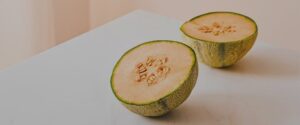
Melons are wonderful for dieting since they contain low-calorie content and a lot of water.
Melon, like watermelon and honeydew, has very few calories—just 46 to 61 for one cup (150 to 170 grams).
Melons are a great source of potassium, antioxidants and dietary fibre, like vitamin C, but they have a low-calorie count.
Furthermore, eating fruits that are high in water content may aid in weight loss.
Nonetheless, watermelon has a high galvanised iron level. Therefore, moderation is key.
Balled or cubed melons add a fun texture and flavour to any fruit salad. You may also make fruit popsicles or smoothies out of them.
Melons have low-calorie levels and contain a lot of water. This aids in hydration and weight loss.
15. Oranges

Like most citrus fruits, oranges are nutrient-dense, with high dietary fibre and vitamin C levels and a low-calorie count. Moreover, they are satiating.
Studies have shown that consuming whole fruits, as opposed to having fruit juices, leads to less appetite and lower calorie consumption and increases feelings of satiety.
So, you may consume oranges when whole rather than drinking orange juice if you’re watching your weight. The fruit is delicious or mixed into a salad or sweet dish.
In conclusion, oranges are a great source of fibre and vitamin C. In addition, they can aid in preventing hunger pangs between meals.
16. Avocados
Avocados are high-calorie and fatty fruits that require warm temperatures to develop.
Avocado is among the most calorically dense foods; 100 grams (half avocado) has 161 calories. The same serving size also supplies 20 per cent of the recommended Daily Value of folate and 18 per cent of the recommended daily value of vitamin K.
Avocados have a lot of calories and fat, but they may help you lose weight.
Fifty-one people who were either overweight or obese observed a low-calorie eating plan for 12 weeks, including and excluding an avocado in their diet. Both groups lost significant weight, making avocados a good option for dieters.
Researchers have discovered avocados can positively affect cholesterol levels, reduce appetite and increase satiety.
Evidence suggests that adding avocados to your diet regularly can help you eat healthier overall and lower your risk of cardiovascular disease.
Avocado over bread or toast is a healthy alternative to margarine or butter. Avocados are great in dips, smoothies, and salads.
17. Rambutan

These are reddish fruits from the Southeast Asian tree Nephelium lappaceum.
Rambutans, which are berries, are tiny fruits that develop in bunches. Spiky hairs called spinterns cover its leathery skin.
Their juicy, grape-like flesh has a pleasantly sweet and sour flavour.
Each 100-gram or 3.5-ounce serving of rambutans contains 40 per cent of the recommended daily value for vitamin C. Vitamin C is rich in antioxidants and helps strengthen the immune system.
18. Pawpaw
The largest Native American fruit is the pawpaw (Asimina triloba), which is also the most delicious. A couple of Native American civilisations relied heavily on them, and they were also an important food source for the first European settlers and explorers.
The maximum length of the pawpaw is about 15 centimetres (6 inches). When ripe, they take on a greenish-yellow colour and have a sweet, slightly tropical flavour.
Vitamin C, potassium, magnesium, and iron are some minerals in this bulbous fruit. Antioxidant polyphenols are abundant in it as well.
Due to its perishable nature, its tender flesh is rarely available. In the United S, however, you may buy pawpaws from farmer markets or specialist growers when in season.
19. Horned Melon (kiwano)
Kiwano, or jelly melon or horned melon (Cucumis metuliferus), is the delicious fruit of an African vine. Like melons and cucumbers, it is a member of the Cucurbitaceae family.
It has a jelly-like yellow or green interior and a bright orange, spiky outside. Some people eat the fruit’s flesh, even though the seeds are edible.
Especially rich in magnesium and vitamin C, kiwano is a healthy addition to your diet. Animal studies also suggest it can assist with lowering blood sugar, which could benefit people with diabetes.
20. Loquat
Eriobotrya japonica plant bears the tiny, incredibly healthy fruits known as loquats. They can range in colour from yellow to orange to crimson.
Carotenoids are pigments found in plants that have massive health benefits. Examples of diseases that carotenoid-rich food may help prevent cardiovascular diseases and cancer.
These zesty fruits are delicious when raw or cooked into savoury or sweet recipes. Some gourmet food stores will carry loquats.
21. Jujube
Despite sharing a name with a popular candy, jujubes (red dates or Chinese dates) are a nutrient-rich fruit indigenous in Southeast Asia.
Jujubes have a delicious candy-like flavour and a crunchy texture when dried, so many people choose to eat them that way.
Jujubes, whether eaten fresh or dried, are a healthy option. These tiny fruits have abundant flavonoid antioxidants, vitamin C and fibre.
22. Starfruit
The star-shaped star fruit is also known as a carambola. This tropical fruit is native to South and Central America. Its distinctive shape and rich colour render it a highly sought-after complement to cheese and fruit platters.
When ripened, this fruit turns a sunny yellow and exhibits a juicy, somewhat sour flavour. Considering that you can eat the star fruit from stem to stern, it makes a wonderful on-the-go snack.
The huge fruit of the carambola tree (about 124 grams) has only 38 calories but is a good source of vitamin C, copper, potassium and fibre, vitamin C. In particular, its high levels of insoluble fibre benefit digestive health and regularity.
23. Black sapote
Diospyros nigra, commonly known as the black sapote, is a relative of the persimmon. The black sapote’s dark brown pulp is shaped like clusters, which gives the fruit its common name, “chocolate pie fruit,” which reminds one of chocolate pudding.
Per 3.5 ounces (100 grams), black sapote has more than 200 per cent of the daily value for vitamin C.
Black sapote is a seasonal fruit only available through online specialist growers and originates in the Caribbean, Central America and Mexico.
24. Jackfruit
The heaviest jackfruit was 110 pounds (50 kilograms), also called Artocarpus heterophyllus. This fruit originated in India and has small, cone-shaped projections.
When ripe, the flesh gives a pleasant smell and taste reminiscent of bananas. The mild flavour and beefy texture of unripe jackfruit make it a popular vegan alternative.
In addition, it provides some vitamin B vitamins, magnesium, antioxidants, potassium and vitamin C. Evidence from animal studies suggests it may even help control blood sugar levels.
25. Cherimoya
Cherimoya, often known as the custard apple, is a rare and delicious fruit. Although it originated in South America, it is now cultivated in all tropical zones.
Commonly, a spoon is used to remove the green, heart-shaped fruit’s creamy flesh.
Cherimoya is an excellent source of many nutrients, including magnesium, various B vitamins, potassium, fibre, manganese and vitamin C. The antioxidants included in this fruit may help prevent cell damage.
26. Soursop
The soursop fruit, Annona muricata, is oval and prickly all around. When ripe, it has a yellow-green colouration, and a weight of up to 6.8 kilograms (15 pounds) will amaze you. The combination of sour and sweet is very pronounced.
While human research has not been done extensively, animal and test-tube studies suggest that soursop can provide anti-diabetes, anti-cancer and anti-inflammatory benefits.
Soursop, typically associated with the tropics, is available year-round through specialised fruit retailers like Amazon.
27. Husk Cherries
Peruvian groundcherries, golden berries, inca berries and Cape gooseberries are all different names for the same little yellow fruit known as husk cherries.
They are similar to tomatillos and can be utilised in the same ways. However, their inedible paper-like husk is discarded before use. When you eat them raw, they make a delicious and healthy snack.
Beta carotene, a powerful carotenoid antioxidant, is abundant, as are vitamins C and several B vitamins.
Depending on where you live, you can find husk cherries at a farmers market or speciality food store.
28. Sapodilla
The sapodilla is the fruit of the evergreen tree Manilkara zapota, which grows naturally in Central America, the Caribbean and Mexico.
This fruit is the form of an egg and has rough, brown skin. The flesh of sapodilla is typically consumed in its raw, rindless form due to its extraordinary taste. The texture of sapodillas can range from smooth to grainy.
Sapodillas are rich in the disease-fighting vitamin C and polyphenol antioxidants.
29. Cloudberries
The cloudberry (Rubus chamaemorus) is a native of North America’s chilly, temperate regions. Foragers seek them out because of their deliciously contrasting sweet and bitter flavours.
Each 100-gram (3.5-ounce) serving of cloudberries provides 176 per cent of the recommended daily value for vitamin C. In addition, they contain a lot of an antioxidant called ellagic acid that shows promise for cancer prevention and metabolic health.
Since cloudberries aren’t commonly farmed, they can be hard to come by. Cloudberry preserves and jams, among other items, are available for purchase on the web.
30. Longan Fruit
Longan fruit originated from Southern Asia and is also referred to as Dimocarpus Longan is related to the lychee and rambutan. Dragon’s eye is so named because its translucent, gelatinous flesh encloses a blackish seed that looks like a huge eyeball shelled.
This fruit is delicious raw and cooked, although it is commonly canned or dried for long-term storage.
The polyphenol antioxidant and vitamin C content of longan fruits is quite high. Their antioxidant and anti-inflammatory characteristics make them useful in TCM for treating parasite infections, boosting appetite, and lowering fever.
31. Beach Plums
Along the Atlantic coast of America grows a wild plum called the Prunus maritima or beach plum. The plants bloom on the sandy soil, and high salt content is found near the ocean. Therefore, they frequently crop up in beach environments and dunes.
This fruit, sized and shaped like a cherry, can be blackish purple to blue.
When mature, beach plums have a pleasant flavour, making them a popular ingredient in baked goods and preserves. They have a low-calorie count but provide a wealth of minerals like vitamin C and provitamin A.
32. Prickly Pear
Nopal, or prickly pear (Opuntia), is a cactus-like plant common in the southwest United States and Mexico.
The flavours of its fruits range from sour to sugary sweet. You’ll need to remove the skin’s spiky hair before you can eat it.
Vitamin C and magnesium, abundant in prickly pears, are crucial for maintaining a healthy muscular tone, immune system, and heart.
You can eat them straight from the tree or turn them into juice or syrup. The fruit’s syrup and raw nopal are available in health food stores and on the web.
33. Japanese Persimmons
Also known as Diospyros kaki, Japanese persimmon is an extensively grown variety of the various species of persimmon. When mature, their flesh has a spectrum of colours from brownish red to orange, which is tender and tasty.
The Japanese persimmon is an excellent source of many vitamins and minerals, including manganese, copper and provitamin A, vitamin E and vitamin A.
They may help lower cholesterol, reduce inflammation, and protect cells from damage since they contain potent plant components.
Conclusion
In conclusion, fruits are vital to a balanced diet and may help lose weight.
Many fruits have a low-calorie count but are abundant in fibre and other nutrients, making you feel full for longer.
Remember that it’s healthier to consume entire fruits than to drink their juice.
Furthermore, eating only fruits isn’t the answer to weight loss. In addition to exercising regularly, you should aim for a balanced diet with whole foods.

